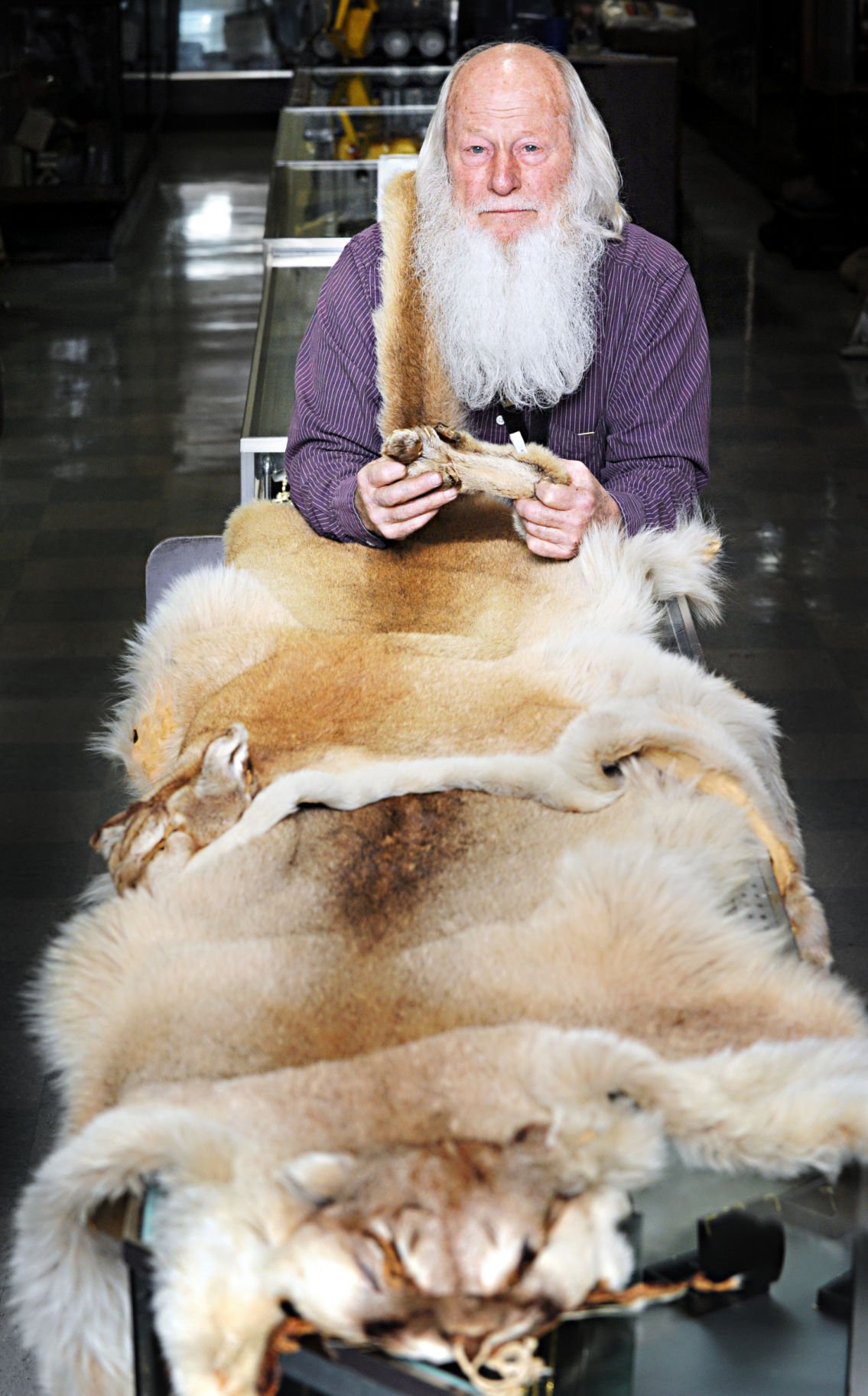
More than two years ago, state and federal officials descended on Littlejohn’s Fine Jewelry in Gilroy and confiscated a cougar skull and pelts, a stuffed owl, mounted ducks, a trophy buck mount and a few other treasured items.
All were illegal to possess, is what the badged raiders told astonished storeowner Robert Littlejohn.
Littlejohn disagrees—and is still waiting for the return of some of his property.
“The federal and local game warden came in and acted like I called them ‘Nazi, greycoat sons of bitches,’ said Littlejohn, a few weeks shy of his 73rd birthday.
The cougars had been dead more than 60 years and had federal tags, he said.
“They were dead long before (the agents) were even born,” he said.
The government officials also demanded that Littlejohn strip nearly 250 antique firearms from cases along his store walls and to never display them again. Among them were a rare 1866 Winchester “Yellow Boy” rifle and Civil War-era muskets.
Since then, Littlejohn has sold from some of the guns, but the rest he displays now only in the privacy and safety of his home where they hang between posts of knotty pine and out of reach of the G-men.
And now, Littlejohn wants back the rest of the items authorities confiscated in December 2012.
Littlejohn grew up in Hollister, making memories hunting game across the Pacheco Pass. He recalls hunting mountain lions back when the government paid hunters bounties to eliminate the predators. But times and laws have changed over the four decades he has been in business in Gilroy.
Hunting and history were and are an important part of Littlejohn’s life, as evidenced by the number of historical items in his store—from Native American bows to rifles balls shot during the Civil War. More animal mounts adored his walls before the raid, too, he said.
“This was the ultimate man cave,” Littlejohn said. “If you walk around, it still isn’t a bad man cave, but it used to be ten times better,” he added, bemoaning the fact he’s not allowed to display his own belonging in his own shop.
Authorities didn’t cite any statute or offer an explanation as to why they were confiscating the items on display, Littlejohn contends.
He now wants to know why his business was turned inside out over a few dead animals he says were legally in his possession.
California voters in 1990 passed the Wildlife Protection Act. It makes it a crime to possess mountain lion parts unless obtained prior to the law’s passage. Nonprofit museums or government-owned facilities open to the public can possess them for exhibition, storage or scientific purposes, however.
“That’s the way the law is written,” said Lt. Patrick Foy, spokesperson for the California Fish and Wildlife Department. Even if a cougar is legally hunted in another state, the law prohibits any part of the animal from entering California, he added.
But as agents confiscated Littlejohn’s two cougar pelts and other items, he “kept saying ‘give me the law. Give me something,’” he recalled. “I told them that this stuff is all legal.”
It took a call and a letter from the pelts’ original owner to Fish and Wildlife officials to clear up part of the mess back then.
Bill Nicholls, in his letter, explained the pelts had been in his family since the 1960s and were legally taken on a federal game tag. Nicholls donated the pelts to Littlejohn in 1987 for display in the well-known jewelry store-turned-pawn shop-turned-museum on Monterey Street in Gilroy.
Authorities returned the pelts to Littlejohn around 30 days after the raid.
“Oftentimes when you go into an investigation like this, you seize everything and then you sort it out during the investigation,” Foy said. “If you determine something was validly obtained prior to the law going into effect, it would be perfectly reasonable to return it.”
But there was a caveat. To get the pelts back, Littlejohn had to sign away ownership of the mountain lion skull, which, like the pelts, he contends was his property and was legally obtained before passage of the 1990 law.
Here’s what he signed on Feb. 4, 2013:
“I Robert Edwin Littlejohn do hereby forfeit my property consisting of one mountain lion skull to the California Department of Fish and Game. At discretion of the department, the item…may be donated to an accredited museum or used for legitimate educational purposes.”
Littlejohn said he had to sign the letter before the agents would give him a receipt for the pelts.
At the same time authorities took the pelts and skull, they also grabbed a full day’s hunt of ducks, stuffed, that hung on the store wall.
“I shot them myself, I taxidermied them myself and I put a sign on them that said ‘not for sale,’” Littlejohn said, noting the ducks were eventually returned to him but, like his firearms, are no longer displayed on the shop’s wall.
To this day, Littlejohn doesn’t know what became of the stuffed owl authorities took at the same time. When a car struck the bird four or five decades ago, the driver had it mounted and it ended up in Littlejohn’s collection.
Two years later, Littlejohn wants his birds back, wants to know why he can’t display his firearms and doubts whether his mountain lion skull is being used for educational purposes; to this day, he believes he was robbed under the guise of law so someone could get their hands on a rare animal part.
“What museum is it at, or is it on somebody’s desk?” he asked.













